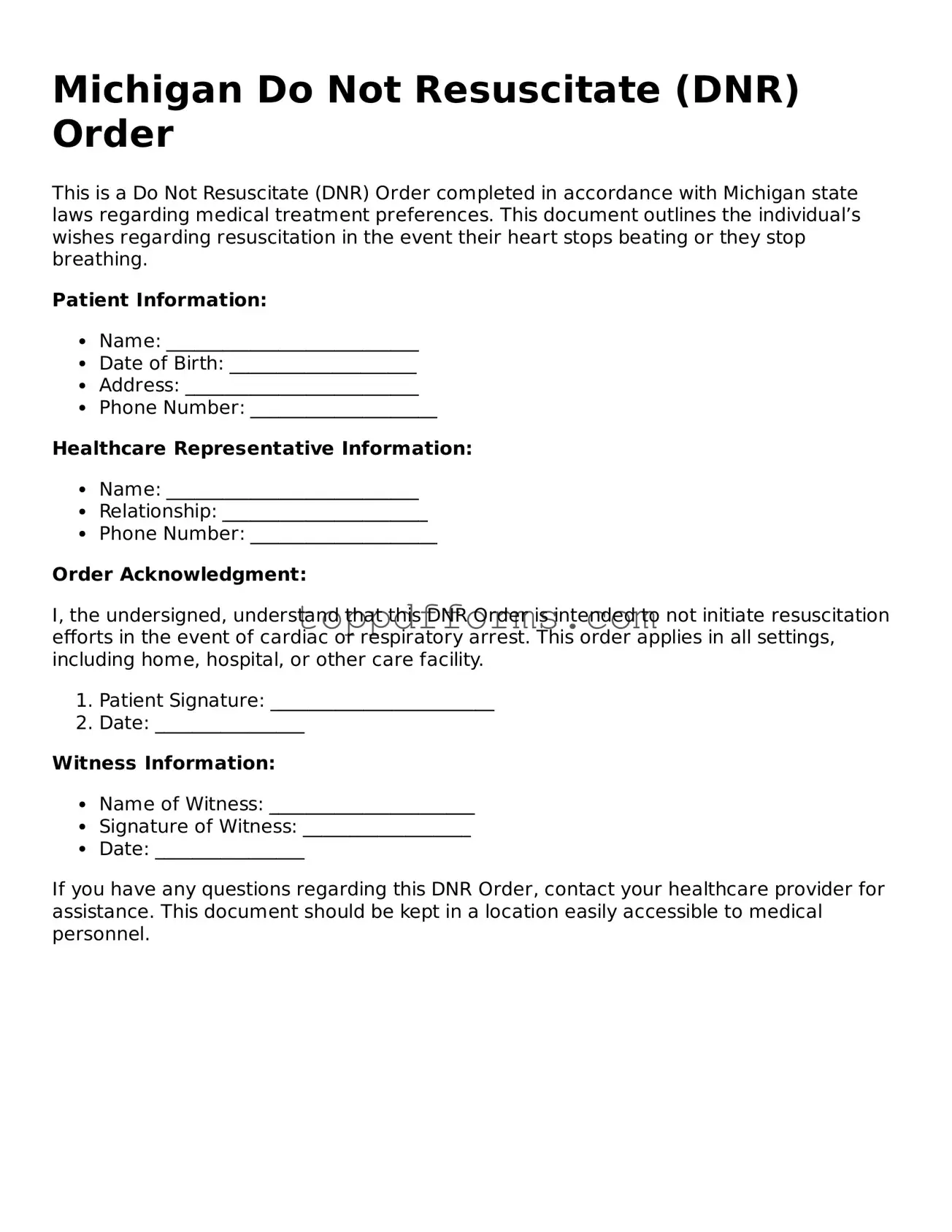What is a Do Not Resuscitate (DNR) Order in Michigan?
A Do Not Resuscitate Order (DNR) in Michigan is a legal document that instructs medical personnel not to perform cardiopulmonary resuscitation (CPR) in the event a patient’s heart stops beating or they stop breathing. This order is intended for individuals who wish to avoid aggressive life-saving measures in certain medical situations, typically when they are facing terminal illness or severe health conditions.
Who can request a DNR Order?
A DNR Order can be requested by the patient themselves if they are capable of making their own medical decisions. If the patient is unable to communicate their wishes, a legally authorized representative, such as a family member or a designated healthcare proxy, may request the order on their behalf. It is essential that the person requesting the DNR understands the patient's values and wishes regarding end-of-life care.
How do I obtain a DNR Order form in Michigan?
You can obtain a DNR Order form from various sources, including hospitals, healthcare providers, and online resources. The Michigan Department of Health and Human Services provides a standardized DNR Order form that can be downloaded from their website. It is crucial to ensure that you are using the most current version of the form to avoid any issues with its validity.
What information is required on the DNR Order form?
The DNR Order form requires specific information, including the patient’s name, date of birth, and the signature of the physician who is issuing the order. Additionally, the form must be signed by the patient or their authorized representative. It is important to provide accurate and complete information to ensure that the order is recognized by medical personnel.
Where should I keep the DNR Order form?
The DNR Order form should be kept in a location that is easily accessible to medical personnel. It is recommended to keep a copy in the patient’s medical records and to provide copies to family members, caregivers, and any healthcare providers involved in the patient’s care. Some individuals choose to wear a medical alert bracelet or necklace that indicates they have a DNR Order in place.
Can a DNR Order be revoked or changed?
Yes, a DNR Order can be revoked or changed at any time by the patient or their authorized representative. To revoke the order, the patient should notify their healthcare provider and ensure that the revoked order is documented in their medical records. It is advisable to complete a new DNR Order form if the patient wishes to make changes to their previous instructions.
What should I discuss with my healthcare provider regarding a DNR Order?
It is essential to have an open and honest conversation with your healthcare provider about your wishes regarding resuscitation and end-of-life care. Discuss your health condition, prognosis, and any concerns you may have. Your healthcare provider can help clarify the implications of a DNR Order and assist you in making informed decisions that align with your values and preferences.
